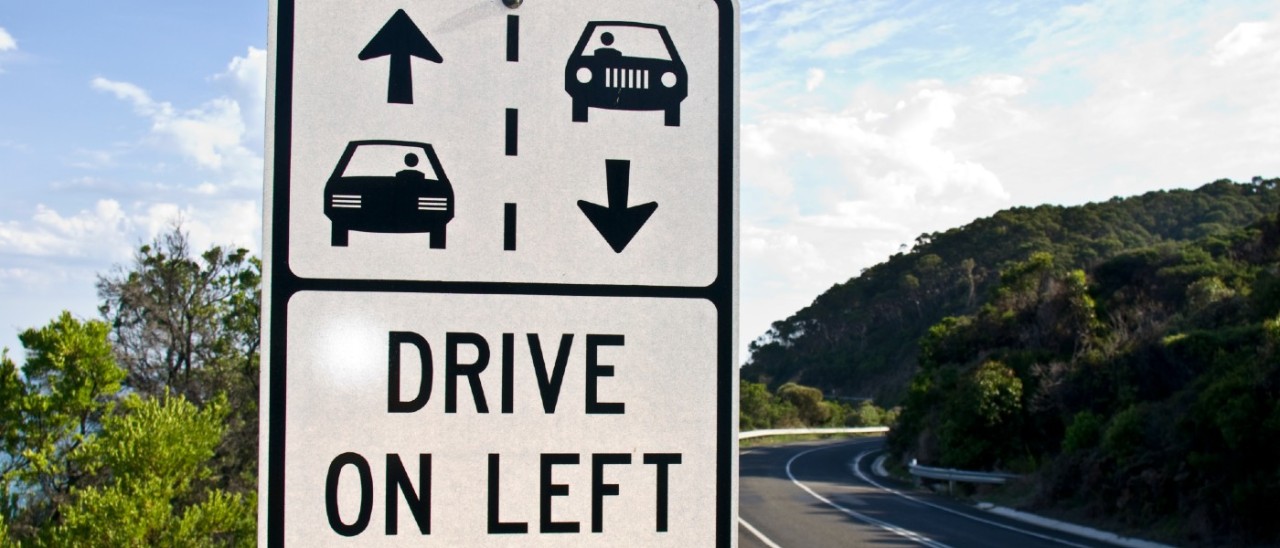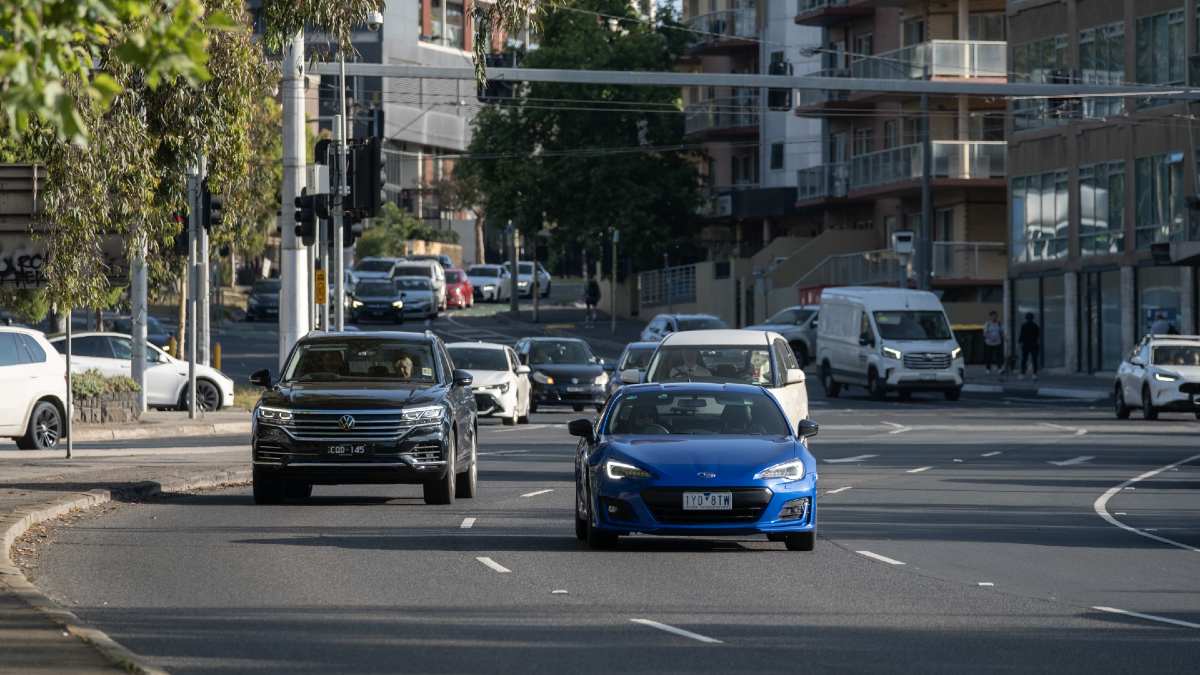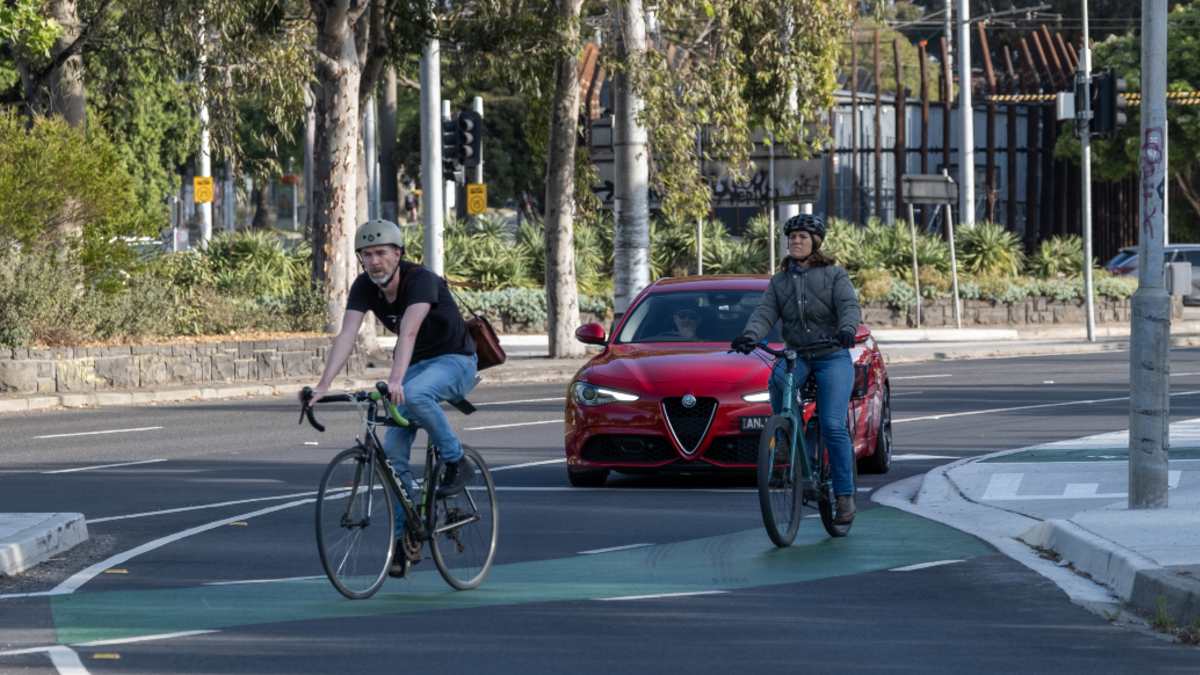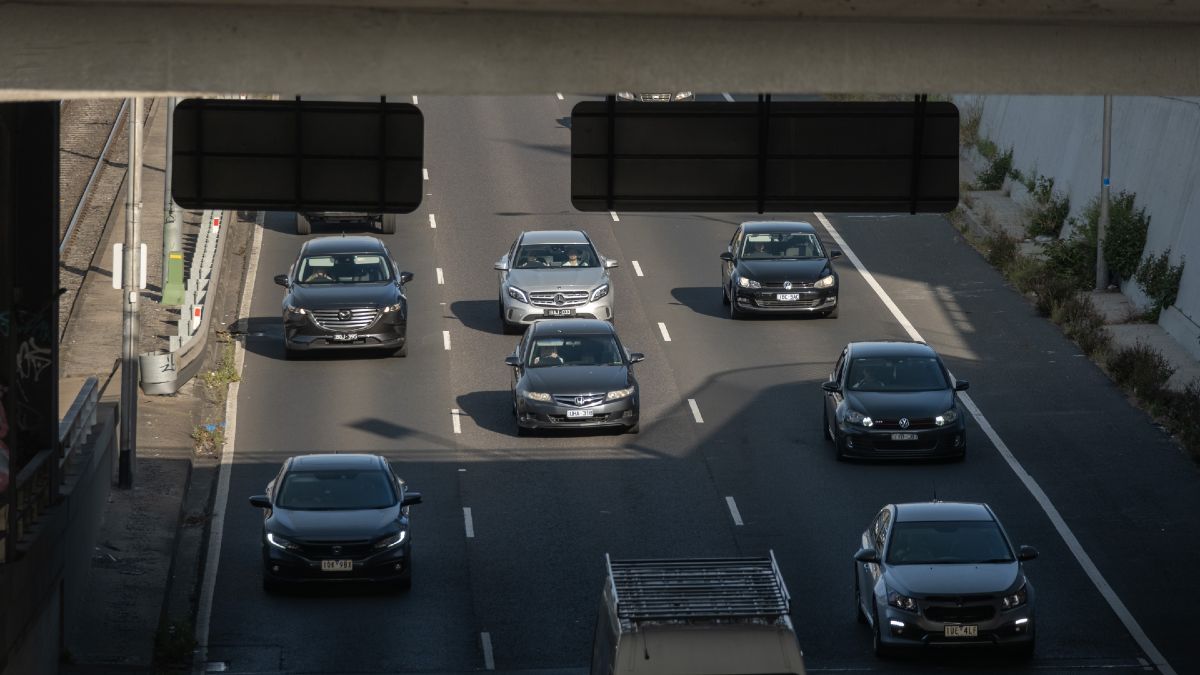Discover key insights on Victoria’s West Gate Tunnel, including essential facts, toll details, and travel benefits for drivers.
Road rules for merging, overtaking and keeping left in Victoria

Staying safe and reducing congestion on Victoria’s roads isn’t just about driving carefully; it also means understanding and following road rules designed to keep traffic flowing smoothly. Among the most commonly misunderstood rules are those surrounding keeping left, merging, and overtaking.
At RACV, one of the ways we advocate for road safety is through education. Knowing the correct way to behave on Victorian roads isn’t just about compliance — it’s about courtesy and community safety. Here's a breakdown of what every driver should know about these essential road rules.
Brush up on your road rules
Victorian road rules: keeping left
On Australian roads, you must drive on the left. About a quarter of the world's countries use left-hand traffic rules, with the rest adopting right-hand traffic instead.
The rule
In Victoria, the rule for keeping left is clear. On multi-lane roads with a speed limit over 80km/h, or where there's a 'keep left' road sign, drivers must keep left unless overtaking. Even when there is no signage, the default rule stands.
The exceptions are:
- if you’re turning right
- if you’re making a U-turn from the centre of the road
- signs or markings that indicate otherwise.
Why it matters
Keeping left allows faster-moving vehicles to overtake safely in the right-hand lane. When drivers unnecessarily stay in the right lane, it forces others to overtake on the left: a manoeuvre that can be riskier and less expected. 'Lane-hogging' can create frustration, erratic lane changes, and even road rage incidents.
Penalties
Failing to keep left when required can result in fines and demerit points. It also contributes to inefficient traffic flow and avoidable safety risks.

Drivers must keep left unless overtaking. Image: Matt Harvey
Victorian road rules: merging
Merging lanes is something all drivers do daily, whether entering a road, changing lanes in traffic, or navigating a roadworks zone. But not everyone does it correctly.
Always use your indicators early and consistently, maintain a safe following distance, and adjust your speed slightly to slot smoothly into the adjacent traffic. Note that merging rules apply to any and all road types, including freeways and highways.
The two types of merging
There are two common merging scenarios, and each has its own rule. This distinction is crucial for both safety and clarity. Many drivers mistakenly believe they always have to give way when merging, which leads to hesitation and can cause rear-end collisions or traffic slowdowns.
Dashed-lane merge (when lines still separate lanes)
If you're moving from one lane to another and lane markings are still visible, it is classed as a lane change, and you must give way to all vehicles in the lane you're entering.
Zipper merge (when lanes end and lines disappear)
If your lane ends and there are no marked lines separating you from the lane you’re merging into, the give way rule applies to the vehicle behind. In this case, you have the right of way over a vehicle beside or behind you in the adjacent lane. This is known as the zipper merge, like the teeth of a zipper coming together. It’s efficient and safe when done correctly. This style of merging can improve traffic flow, especially in congested areas.
Penalties
Incorrect merging can result in fines and loss of demerit points. But more seriously, confusion or misjudgement while merging can cause collisions and even injuries.
More: RACV's successful campaign to safeguard roadside workers and customers

Drivers must give way to bicycle riders if they’re crossing or turning across a bike lane, including slip lanes. Image: Matt Harvey
Victorian road rules: overtaking
Overtaking is one of the riskiest driving manoeuvres because it involves temporarily entering a lane of opposing traffic or quickly moving between lanes. That’s why there are strict rules around when and how you can overtake in Victoria.
General overtaking rules
When you can’t overtake
You must not overtake:
- across unbroken (solid) centre lines unless you’re turning right or making a legal U-turn
- when approaching a crest, bend or dip in the road that obstructs your view of oncoming traffic
- on the left, unless the vehicle is turning right or making a U-turn; or you're on a multi-lane road with marked lanes
- a stationary or slow-moving vehicle (unless safe).
Overtaking on the left
Although not common, overtaking on the left is allowed in specific circumstances. It must be safe and legal, with no traffic control signs or road markings prohibiting the manoeuvre. The road must have two or more marked lanes in your direction, and you must not leave the sealed part of the road to overtake on the left.
Overtaking cyclists
Victorian drivers and motorcyclists must ensure a minimum of one metre distance when passing a cyclist in a 60km/h or less zone, and 1.5 metres when passing in a 60km/h or higher zone.
You're allowed to briefly cross the centre road line, including solid lines and double lines, solid lane lines, and painted islands when overtaking a bicycle rider, but only when you have a clear view ahead and it is safe to do so.
This rule aims to reduce the risk of cyclists being hit by vehicles. It also helps prevent cyclist destabilisation, which can occur due to a vehicle's larger mass and speed passing close by and sending out a wave of pressure.
More: The must-know road rules for all bike riders in Victoria
Heavy vehicles and slow drivers
If you're driving below the speed limit on a single-lane road and there's a long queue of vehicles behind you, it's courteous and often safest for everyone to pull over (when safe to do so) to allow others to pass.
Truck drivers are also legally required to stay out of the far-right lane on three-lane or more roads, except in special circumstances (e.g. avoiding an obstruction or preparing to turn right).

Make sure you know when you can and can't legally overtake. Image: Matt Harvey
Road courtesy is key
While road rules exist to provide legal clarity and structure, driver courtesy plays a huge role in traffic harmony. RACV urges all Victorian drivers to be patient, courteous, and attentive — particularly when merging or overtaking.
Letting someone in, maintaining a safe distance, and not speeding up when being overtaken aren’t just polite; they’re also required by law.


